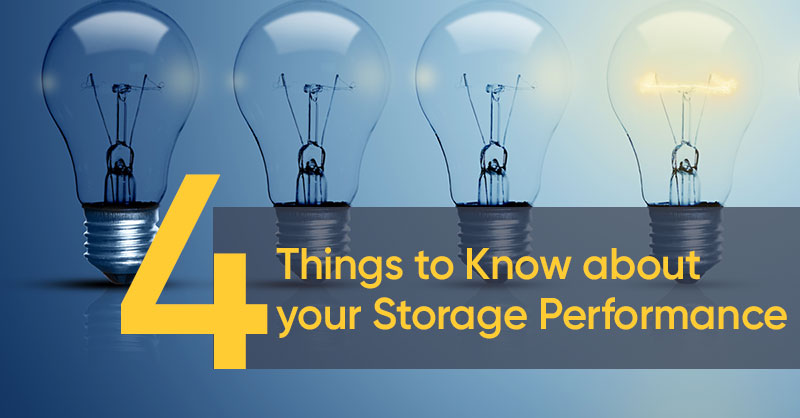In today’s business world, data is your king, data is your gold, data is your lifeblood. So properly managing your storage environment has never been more important. Organizing, operating, guarding and protecting invaluable business and data center assets are top priorities for organizations of any kind or size.
At the same time, making sure to maximize the investment in your storage environment requires a fine balance and a lot of juggling. While most newly installed storage solutions operate almost unnoticed in their early years, as time goes by, infrastructure & operations (I&O) leaders must understand there are potential bumps and forks in the road.
As the end of the initial warranty period nears, be prepared to receive a hard-sell from manufacturers to upgrade—regardless of storage performance and reliability track record. According to Gartner, “The useful service life of storage arrays, which is seven to eight years in clean data centers, is almost always greater than their planned service lives.”1
For that reason, it’s crucial to know four things that manufacturers will never tell you about storage.
1) New isn’t always the best
While manufacturers most likely will start demanding upgrades when the original warranty period nears its end (typically around three years), this doesn’t necessitate an immediate call to action. If your current set-up is meeting performance expectations, then why go down the path of an expensive upgrade when leaving well enough alone saves time and money without any business disruption?
This also holds true when contemplating the latest bells and whistles when your current operation already is in tune. The adage “don’t fix it if it ain’t broke” rings loud and clear in this scenario. Instead, give your capex a huge break with the realization that other solutions for reducing opex also exist.
2) Manufacturers don’t always know best
According to Gartner, “I&O leaders who restrict themselves to vendor-supplied maintenance often find themselves doing infrastructure refreshes due to punitive vendor policies around postwarranty support pricing that means keeping their systems on maintenance is more expensive than replacing them”.2 Often this forces companies to change out gear that works perfectly because the cost of maintaining the equipment is more than the cost to replace it.
As a result, companies end up in single-source scenarios where their entrenched manufacturer wields maintenance waivers that make it impossible for any new manufacturers to compete. While this predicament isn’t fair, it’s frequent.
While you may have purchased a particular manufacturer’s storage because it was the best solution for your requirements, staying with that manufacturer over time may not be the best decision for your business or budget. Simply put, manufacturers don’t always know best.
There are many instances where agreeing to full-tilt manufacturer support is unmitigated overkill. And don’t expect manufacturers to admit you’re overpaying. Instead, consider enlisting an independent third-party to audit your assets and provide an objective evaluation.
Pay particular attention to the reality and viability of microcode updates. Such activity falls off rapidly by the third or fourth year.
According to Gartner, “IT leaders responsible for delivering a storage infrastructure with 24/7 availability historically default to vendor-supplied maintenance. However, many of these clients fail to notice that the mismatch between an array’s active marketing life and its planned useful service often results in microcode update activity falling off rapidly by the third or fourth year of their arrays’ planned five-year service life. It is this reduction in update activity that dramatically reduces the real risks of using TPM relative to vendor-supplied maintenance.”3 Simply put, you don’t want to be paying for things you no longer need. The key here is to understand what must remain on manufacturers’ maintenance and where you can implement more flexible and cost saving alternatives.
3) You have options
Third-party maintenance (TPM) from independent IT service providers has been gaining momentum for a multitude of reasons, not the least is the ability to gain much-needed flexibility in extending the useful life of still-viable IT equipment, including storage.
Gartner reports, “A core value proposition of TPM providers is lowering the maintenance costs of older storage arrays.” 4 Introducing TPM sends a strong sign to manufacturers that they must negotiate when it comes to keeping your business.
Then open up to soliciting multiple bids for your support needs. Even if you want to stay with the manufacturer ultimately, the debut of competition should keep everyone on the up and up while revealing the provider that will work off the thinnest margin. According to Gartner, “By comparison, third-party hardware maintenance is commonly priced 40% to 70% below vendor-provided hardware maintenance, or 3% to 9% of the system’s hardware cost to the user.”5
4) Step outside your comfort zone
Most everyone gets a little itchy or antsy when exploring new territory. While considering TPM, embrace that being outside your comfort zone represents a free pass to ask questions, consider alternatives and seek new knowledge. After all, that is what any RFP process should be all about. Request a detailed solution, and don’t settle for a list of product offerings. Be ready—and willing—to negotiate.
Ask a handful of respondents for their best suggestions on how to maintain your operations. Include candidates that are not restricted to one manufacturer and immediately dismiss anyone pitching proprietary solutions. The key is to avoid vendor lock-in and experience true IT freedom.
If your inquiry yields learning a few new tricks, gaining some unexpected insights or an unexpected path with a better deal, be brave enough to embrace it. Want to test the TPM waters before jumping in? Gartner suggests, “Redeploy older storage arrays into non-mission- or non-business-critical environments to gain experience with TPM or to overcome resistance to its use.”6
Still have questions?
Read more by accessing our in-depth whitepaper, “IT Trends Report: New Approaches to Storage Maintenance and Hardware.”
1 Gartner, Lower Both Storage Acquisition and Ownership Costs by Using Third-Party Maintenance, Stanley Zaffos, 3 March 2017
2 Gartner, Ibid.
3 Gartner, Ibid.
4 Gartner, Ibid.
5 Gartner, Ibid.
6 Gartner, Ibid.



